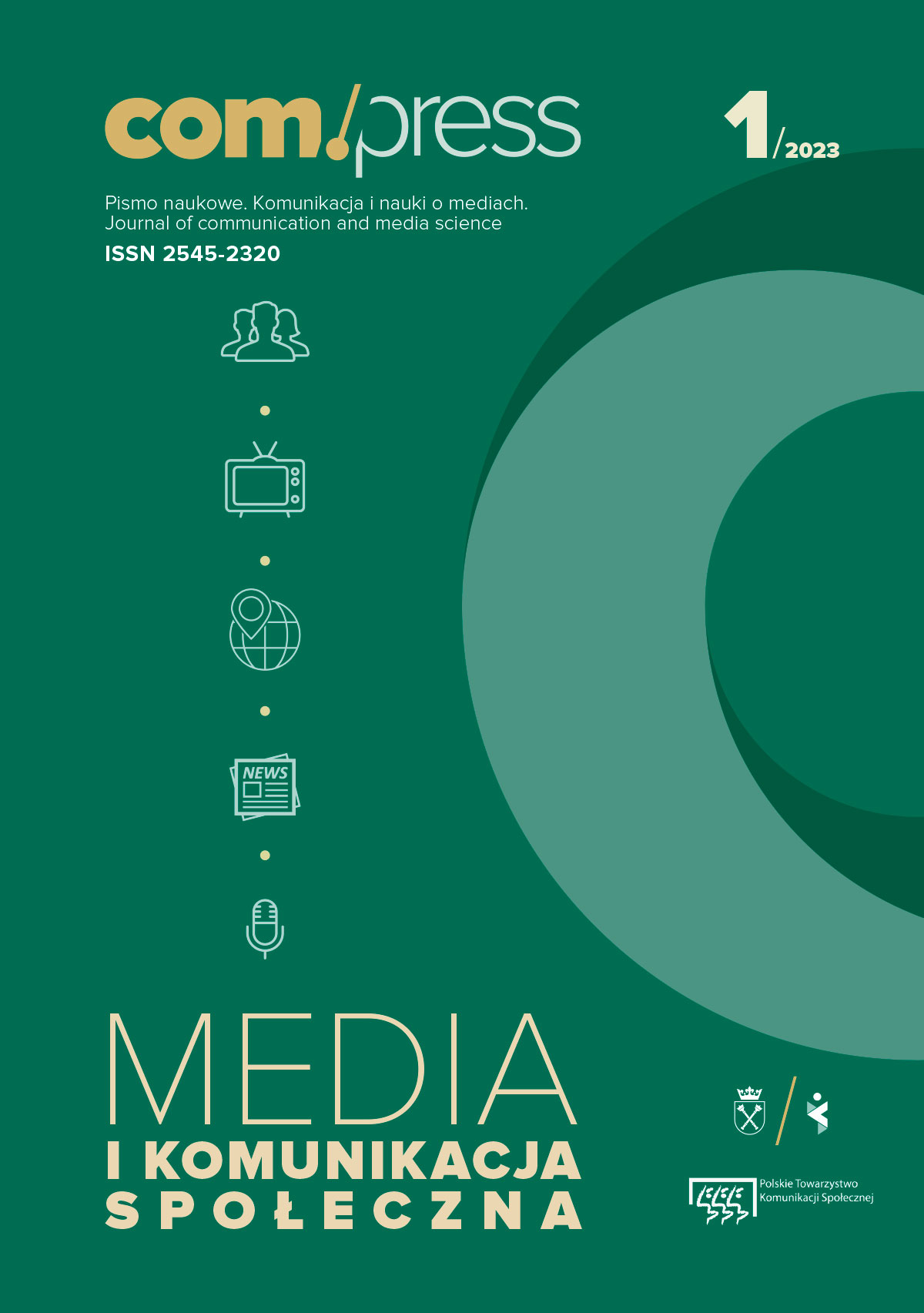A New Look at Chinese Disinformation - Growing Convergence with Russian Tactics and the COVID-19 Pandemic
DOI:
https://doi.org/10.51480/compress.2023.6-1.531Keywords:
disinformation, fake news, COVID-19, wolf-warrior diplomacyAbstract
Disinformation is not a new phenomenon, but it is undoubtedly becoming more and more common, posing a threat to both modern societies and democratic states. The aim of the article is to analyze the evolution of Chinese disinformation, which has become visible since the outbreak of the COVID-19 pandemic, and to confront it with its Russian counterpart. The article presents Beijing's previous defensive practice in the context of spreading disinformation, consisting in improving China's image with positive messages about the state. Particular attention was paid to changing the Chinese approach since the COVID-19 pandemic to a more offensive one, using Russian disinformation methods and tools. Presented, among others the presence of Chinese diplomats on Twitter in the spirit of wolf-warrior diplomacy, Beijing's activities in the USA, Africa and Europe, and Chinese tools of influence such as TikTok. The article also analyzes the similarities and differences between Chinese and Russian disinformation, paying attention to the strengths and weaknesses of both countries in the context of conducting influence operations. Considering the relatively little knowledge about Chinese disinformation campaigns, the speed of learning, and China's huge potential in the form of diverse tools of influence both online and offline, it can be concluded that Chinese disinformation will be an increasingly powerful tool used by this country on the international arena.
References
Ballante, R. (2020). Learning from the Russians: Beijing’s changing media tactics at a time of Coronavirus. Pobrane z: https://ceias.eu/learning-from-the-russians/ (25.01.2023).
Charon, P., Vilmer, J. B. (2021). Chinese influence operations. A Machiavellian Moment. Pobrane z: https://www.irsem.fr/report.html (09.05.2023).
Darczewska, J. (2019). Między jawną dezinformacją a niejawną praktyką. Gry rosyjskich służb, Warszawa: Ośrodek Studiów Wschodnich im. Marka Karpia.
Dubow, B., Lucas, E., Morris, J. (2021). Jabbed in the Back: Mapping Russian and Chinese Information Operations During the COVID-19 Pandemic. Pobrane z: https://cepa.org/comprehensive-reports/jabbed-in-the-back-mapping-russian-and-chinese-information-operations-during-the-covid-19-pandemic/ (27.01.2023).
Karásková, I., Bachulska, A., Matura, T., Šebok, F., Šimalčík, M. (2020). China’s propaganda and disinformation campaigns in Central Europe, Praga: Association for International Affairs.
Kabash, M. (2021). Putin finds ally in China’s TikTok in crackdown on anti-govt content. Pobrane z: https://theprint.in/world/putin-finds-ally-in-chinas-tiktok-in-crackdown-on-anti-govt-content/649061/ (25.01.2023).
Kupiecki, R., Bryjka, F., Chłoń, T. (2022). Dezinformacja międzynarodowa: pojęcie, rozpoznanie, przeciwdziałanie. Warszawa: Wydawnictwo Naukowe Scholar.
Lipińska, A. (2022). Chińskie operacje w dobie COVID-19. Dezinformacja – metody, dziedziny i ewolucja. Cybersecurity and Law, 7(1), 61–71. doi.org/10.35467/cal/151813.
Mazarr, M. J. i in. (2019). Hostile Social Manipulation. Present Realities and Emerging Trends. Pobrane z: https://www.rand.org/content/dam/rand/pubs/research_reports/RR2700/RR2713/RAND_RR2713.pdf (20.01.2023).
Molter, V., DiResta, R. (2020). Pandemics & Propaganda: How Chinese State Media Creates and Propagates CCP Coronavirus Narratives. The Harvard Kennedy School (HKS) Misinformation Review, doi.org/10.37016/mr-2020-025.
Mosbacher, G. (2020). Georgette Mosbacher: tuszując prawdę, Chiny doprowadziły do globalnej pandemii [OPINIA]. Pobrane z: https://wiadomosci.onet.pl/opinie/koronawirus-ambasador-usa-w-polsce-komentuje-dla-onetu/zlktyzb (25.01.2023).
Needham, K. (2020). China tweet that enraged Australia propelled by ‚unusual’ accounts, say experts. Pobrane z: https://www.reuters.com/article/us-australia-china-tweet-idUKKBN28E0YI (25.01.2023).
Nowak, J. S. (2008). Społeczeństwo informacyjne – geneza i definicje. W: P. Sienkiewicz, J.S. Nowak (red.), Społeczeństwo informacyjne. Krok naprzód, dwa kroki wstecz (s. 25–48). Katowice: Polskie Towarzystwo Informatyczne.
Paris, B., Donovan, J. (2019). Deepfakes and Cheap Fakes. Pobrane z: https://datasociety.net/wp-content/uploads/2019/09/DS_Deepfakes_Cheap_FakesFinal-1-1.pdf (25.01.2023).
Šebok, F., Turcsányi, R. Q. (2021). China as a Narrative Challenge for NATO Member States. Pobrane z: https://stratcomcoe.org/publications/china-as-a-narrative-challenge-for-nato-member-states/220 (20.03.2023).
Schrader, M. (2020). Friends and Enemies: A Framework for Understanding Chinese Political Interference in Democratic Country. Pobrane z: https://securingdemocracy.gmfus.org/wp-content/uploads/2020/04/Friends-and-Enemies-A-Framework-for-Understanding-Chinese-Political-Interference-in-Democratic-Countries.pdf (20.01.2023).
Tucker, E. (2022). TikTok’s search engine repeatedly delivers misinformation to its majority-young user base, report says. Pobrane z: https://edition.cnn.com/2022/09/18/business/tiktok-search-engine-misinformation/index.html (25.01.2023).
Downloads
Published
How to Cite
Issue
Section
License
Copyright (c) 2023 Polish Communication Association

This work is licensed under a Creative Commons Attribution-ShareAlike 4.0 International License.
Content of the articles is licensed under a Creative Commons Attribution 4.0 International license





